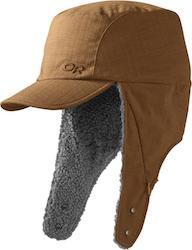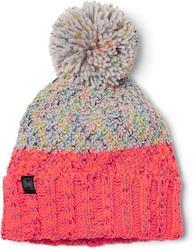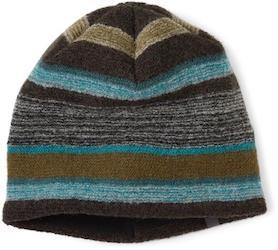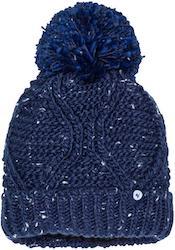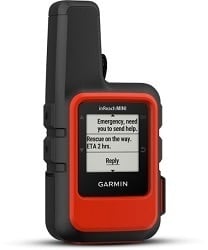WINTER HIKING TIPS: THE ULTIMATE GUIDE TO HIKING IN SNOW
*This post is sponsored by REI*
As the days get shorter and the weather gets colder, its easy to lose motivation to get outside. Sure, its not as simple as it is in the warmer months when you can just throw on your shoes and hit the trail. But, with a shift in your mindset and these winter hiking tips, hiking in the winter is actually really fun. Its a great way to stay active and healthy during the darker months when you might feel inclined to hunker down in front of the tv. Not only will hiking provide physical benefits, like strength, balance, and cardiovascular health, but spending time outside boosts your mood and improves mental health too. So, hiking might help to combat the winter blues if you get cabin fever.
Whether youre not a winter person or youre winters biggest fan, we want you to feel comfortable getting outside and enjoying all four seasons. So, we put together a complete guide to winter hiking, including gear and tips on how to stay safe and warm on the trail.
Heres our complete guide to winter hiking!
General Winter Hiking Tips
Winter hiking requires some more planning than a regular hiking excursion because you need to take extra safety precautions to combat harsh elements. Here are several important things to be aware of that differ from hiking in other seasons:
- Daylight hours are shorter in winter, so hit the trail early to avoid being out in the dark.
- Winter hiking takes longer than summer hiking you tend to move slower and encounter more obstacles. Plan accordingly.
- Technological devices tend to malfunction in cold temperatures, so bring extra batteries/battery packs. Dont rely on your phone.
- Snowpack can hide the trail and trail markers making it easier to get lost. Pay attention and know how to use a map.
- Exercising in winter burns more calories, so you need to stay nourished. This will keep you warm, too.
- Dehydration expedites the onset of hypothermia stay hydrated. If you feel thirsty, youre already dehydrated.

Tips for Staying Warm Hiking in the Winter
Of course, youll be more comfortable staying active outdoors during the winter if youve got appropriate winter hiking gear. But, there are some more steps you can take to stay warm that are just as important.
Bring a Warm Drink in a Thermos
One of our favorite winter hiking tips is to fill up a big thermos, like this one,with your favorite hot beverage. Hot cocoa, cider, chai tea, or even soup broth is great for quick sips to warm you up. While we probably dont need to say it, go without alcohol on cold-weather hikes, as alcohol reduces your body temperature. You can enjoy that hot toddy once youre back at home.
Stay Hydrated
Use an insulating hose for your Camelbackor an insulated bottle sleevefor water bottles when you hike in winter. This will prevent water in the hose from freezing if you are in extreme temperatures. If you dont have a special water bottle, wrap your water bottle in some wool socks or in a beanie in your backpack to help insulate it.
Hike With The Sun
In summer months, you want to avoid the sunniest part of the day when hiking. In the winter, its the opposite. For winter hiking, try to time your hike for when the sun is highest in the sky and the warmest. As soon as the sun drops behind the mountains and the trail becomes shady, temperatures can drop significantly. If you plan on catching the sunset, we recommend not being too far from the trailhead and make sure to pack extra layers.
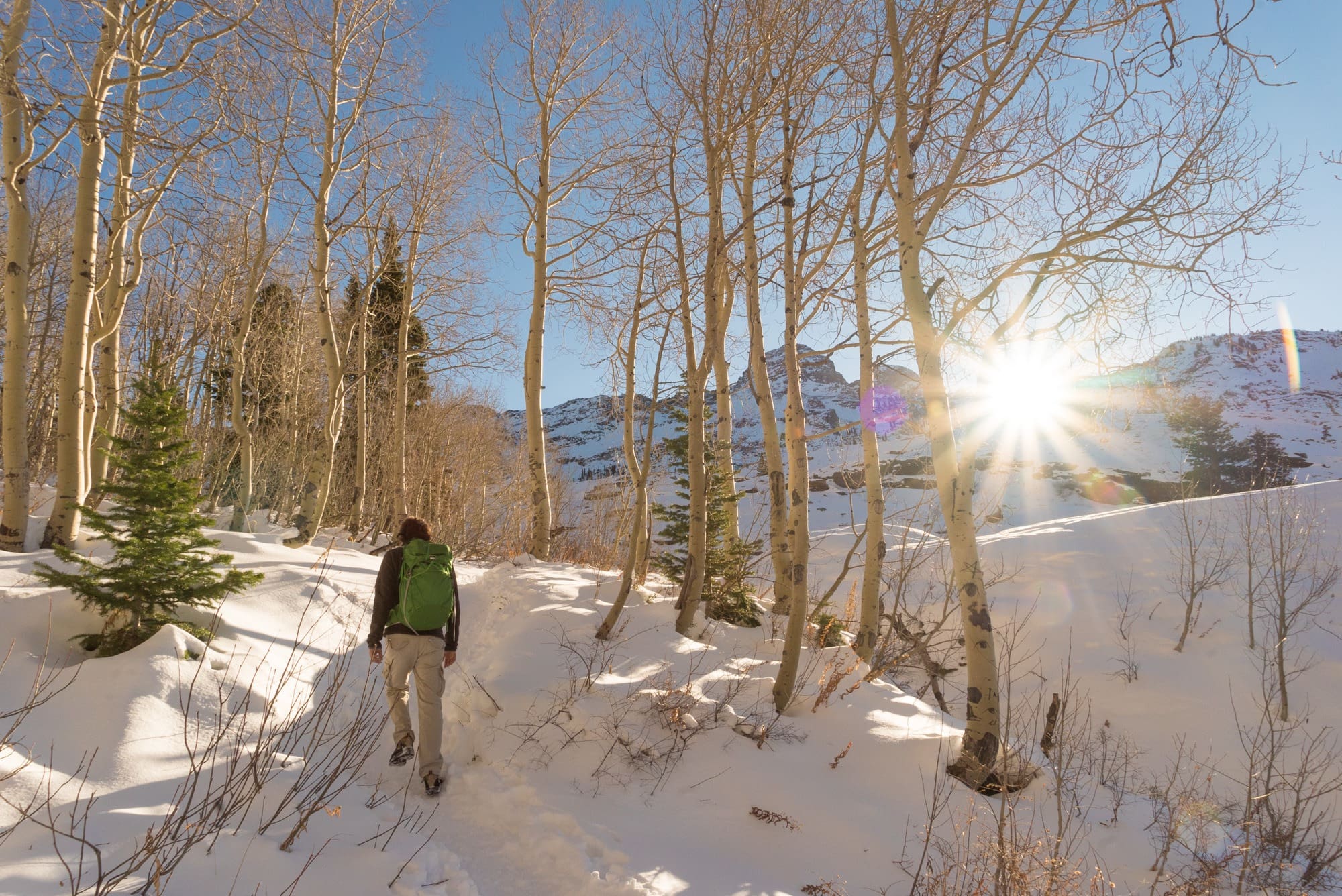
Choose Trails with Some Uphill to get the Blood Flowing
Just like climbing stairs, the uphill sections of your winter hikes will get your heart pumping. This helps to increase your circulation and raise your internal body temperature, which will keep you nice and toasty.
Bring Snacks You Can Eat without Stopping
Your body will need twice the calories it usually does while hiking in the winter, because its burning more to stay warm. Pack snacks that are high in protein to give you energy. Its important that the snacks you bring winter hiking are quick and easy to eat while on the move. Leave the sandwich fixings and picnic at home. Stopping for a long time to eat will leave you cold, and your muscles will have a harder time warming up again.
Here are some hearty cold-weather snacks:
What to Wear Winter Hiking
The key to comfort when winter hiking is staying warm AND dry. If you start to sweat and are wearing the wrong material, youll end up wet and cold. Below I make some suggestions about what I wear winter hiking. If you are on a tight budget or youre simply not ready to invest in winter gear, consider buying used! REI now has a pretty amazing selection of used gear that will help save you money, while reducing waste.
Top
When hiking in cold weather, you should have 3 layers on top. These are some of my go-tos:
If you get hot, shed a layer before you get too sweaty. Avoid cotton and instead opt for synthetic layers that wick moisture and are quick-drying.
Bottom
On the bottom, youve got some options. If its really cold or snowing, youll want to consider wearing a base layerand a waterproof layer on top. You can even wear ski pants. Otherwise, a pair of fleece leggings will do the trick, keeping you warm and comfortable.
Hands
Always pack a pair of gloves. When I hike uphill in winter, I find my hands run warm, so a lightweight waterproof pair of gloves does the trick.
On your Feet
For snowy winter hikes, youll want a good pair of boots. Regular waterproof hiking boots will do, but if you are going to hike a lot in the winter, consider investing in a pair of insulated winter boots, like my favoriteOboz Sapphire 8 BDry Insulated Boot. Insulated winter hiking boots will keep your toes a lot warmer than regular boots or tennis shoes, especially when paired with awarmmidweight wool sock
If youll be traversing across ungroomed snow, wear a pair of gaiters to prevent snow from getting inside your boots. Its also a not a bad idea to bring an extra pair of socks in your pack in case the pair youre wearing gets wet.

For more on what to wear winter hiking and how to layer check out our winter hiking clothing guide.
Check out REIs Used Gear site to save money on winter layers.
Preventing Heat Loss from Your Head When Winter Hiking
You lose a significant amount of heat through the top of your head, mostly because the rest of your body is covered, so the heat can only escape through your head. Wearing a hat is one of the most important winter hiking tips to retain your body heat. Even if you dont think youll need one, its smart to carry one in your pack just in case.
Here are some warm beanies for winter hiking:
Microspikes / Snowshoes
Aside from staying warm and dry, there are some other pieces of winter hiking gear I suggest using that will keep you safe and comfortable on the trail.
Winter hiking often means youll encounter snow and ice on the trail, so youll want more traction in your footwear to prevent slipping. Crampons, microspikes, and snowshoes are the three footwear options for winter hiking depending on the conditions.

Microspikes(pictured above) are made of chain and tiny spikes that slip on over your boots. Theyre helpful in icy conditions on flat terrain and are usually inexpensive.
Crampons are a bit more durable with bigger spikes that grip into ice, making them especially helpful on steep, slick inclines. Its nice to be able to pop these on and off when you need them because they add some weight to the shoe and arent that comfortable to walk normally on.
Snowshoes are light and wide frames that attach to your shoe, ideal for deep snow. By increasing the surface area of your feet, youre able to cruise on top of the snow without sinking in too deep. Depending on the level of snowshoeing youll get into, there are different types of snowshoes. If youre curious about snowshoeing, check out these resources onhow to snowshoe and where to snowshoe.
Here are some great options for microspikes, crampons, and snowshoes:
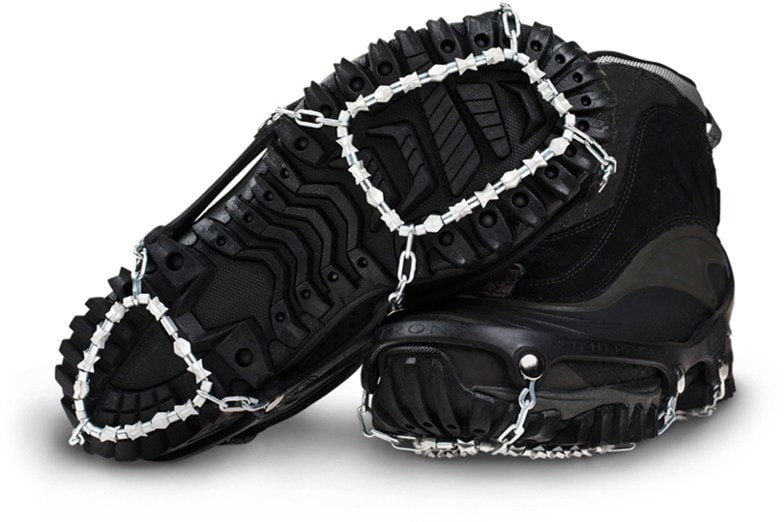
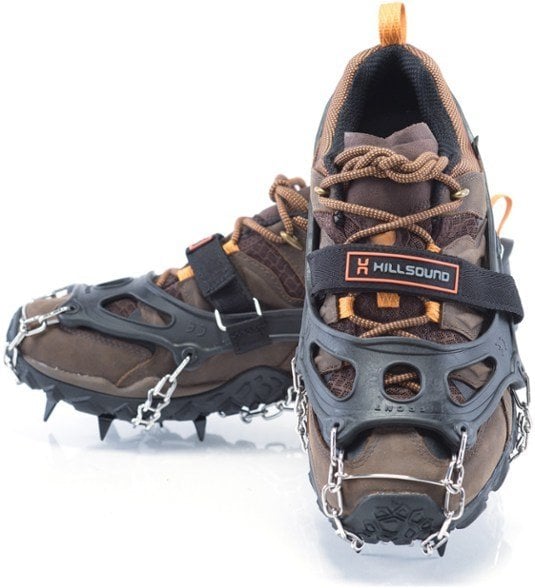
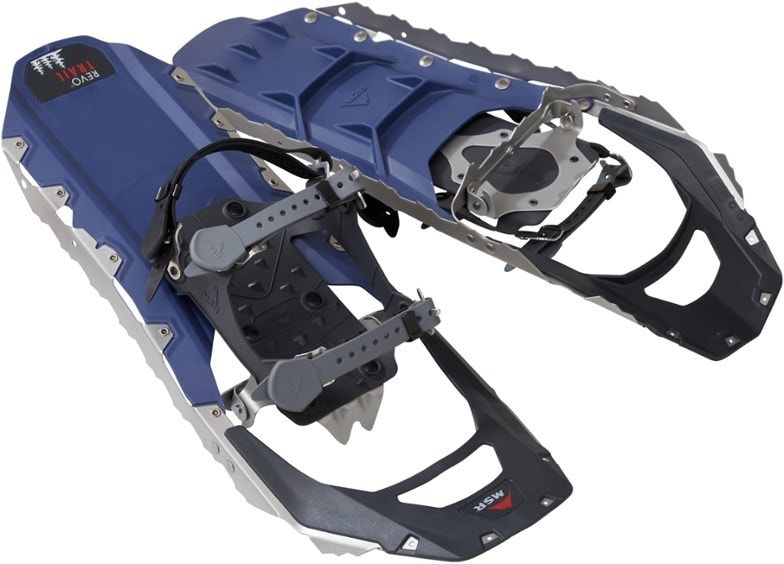
Winter Hiking Safety
Safety Tips for Winter Hiking
Safety is the number one priority at Bearfoot Theory because it ensures that you, your friends, and everyone else can have a good time with fewer worries. So, in order to stay safe, theres a process I use to prevent accidents from happening. Use this general guideline as you plan your winter hiking outing:
- Check snow conditions and weather before leaving the house. If its a blizzard with poor visibility, it increases your chances of getting lostso maybe its not the best day to go hiking.When in doubt, dont go out.
- Contact land managers to inquire about conditions, safety, and higher risk areas.
- If youre in a group, base the plan on the least experienced/able person.
- Always tell someone your plan: where youre headed, your estimated return time, who youll be with, etc.
- Always be prepared for worse weather, just in case.
- If you bring technical winter gear, know how to use it (i.e; ice ax).
- Pack the 10 essentials, even if you only plan to be out a couple of hours (well talk more about gear below).
- Bring a good map, compass, and GPS device. If you wont have cell service, I highly recommend you invest in aGarmin inReach Mini 2-way satellite communicator. This allows for 2-way texts and gives you the ability to call for help in case of an injury, an avalanche, or if you get lost.
Avalanche Safety
Avalanches arent just something backcountry skiers need to be aware of. Anyone who is spending time in the mountains in winter should take the time to understand some basics so you can avoid unknowingly hiking on or below high-risk avalanche terrain.
Depending on where you are hiking and particularly in the Western US, avalanches are more common than one might think, and its vital youre familiar with how they happen and when they can happen. The two types of avalanches are loose-snow and slab. Loose-snow avalanches can occur in wet or dry snow, beginning near the surface and gathering more snow as they slide. Slab avalanches, like the one pictured below, occur when an entire shelf of snow breaks free and slides down the mountain these are the most lethal.
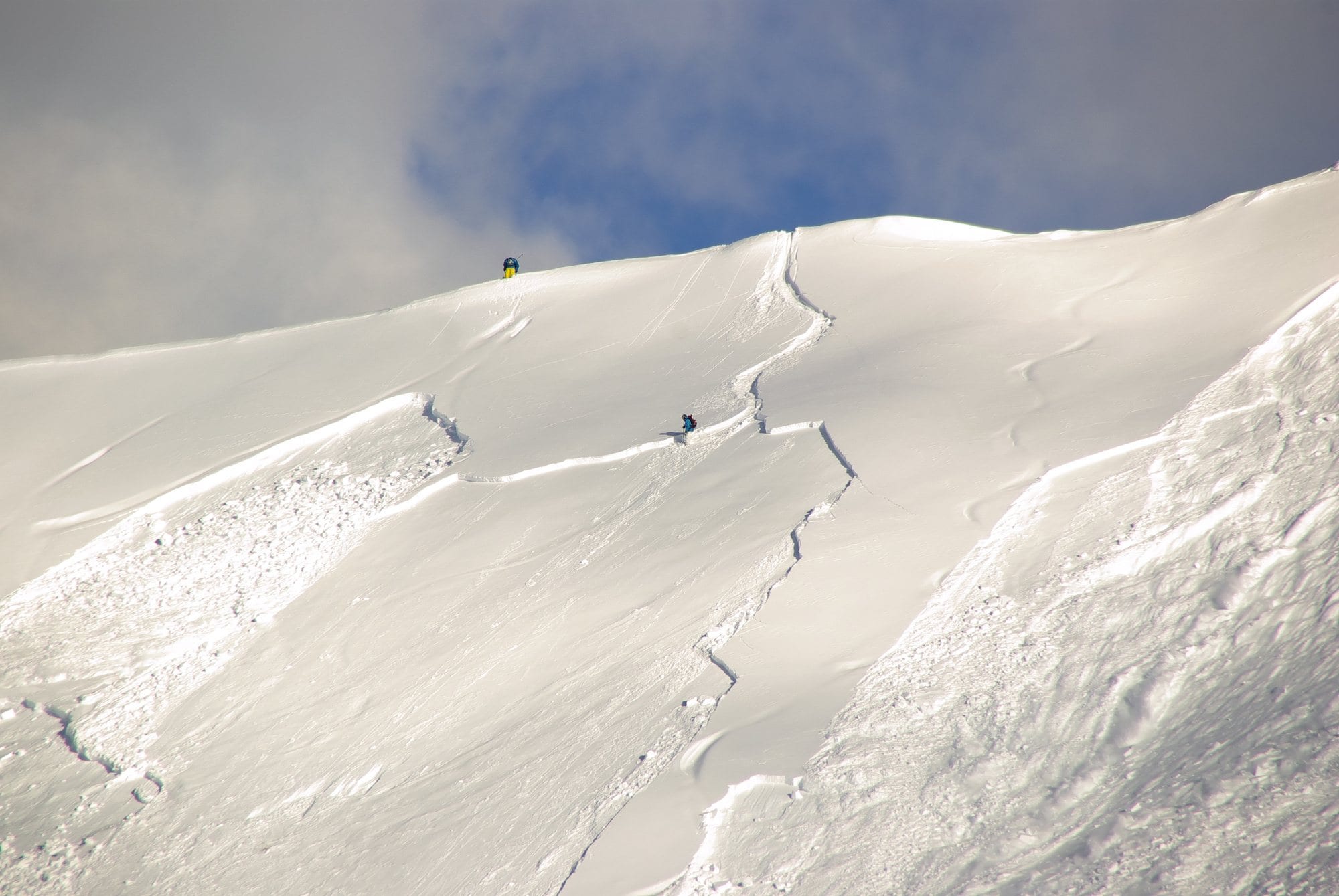
This is an example of a slab avalanche, where an entire hillside slid
Avalanches arecausedby four factors: a steep slope, snow cover, a weak layer in the snow cover, and a trigger. While we dont have control over terrain or conditions, we do have control over ourselves. So, its imperative that you and your friends understand these tips for avalanche safety so you avoid putting yourself in danger.
- Check conditions before going. Avalanche.orgis a reliable website that links to local forecasting offices around the US. Before you plan to go winter hiking, this is a good place to start to make sure snow conditions are stable.
- If youre new to winter hiking, you might not know how to identify unstable snow or what avalanche terrain looks like. To build your knowledge and skill base, I recommend checking outREIs Avalanche Awareness classes. Theres no better way to prevent accidents from happening than educating yourself fully so youre best prepared.
- Just because you see footprints or other people on a trail doesnt mean its safe.
- Do not take risks when it comes to snow/ice travel
- Group-thinking can cloud your judgment trust your gut. If something doesnt feel/seem right, speak up. Communication is key.
- Its okay to turn around before achieving your goal destination. (Many accidents happen when people forego their better judgment because theyre too committed to achieving the goal.)
- While not necessary for mellow winter trails, if you plan to frequently hike around steeper winter terrain where avalanches are common, consider investing in anavalanche beacon.A beacon is a critical piece of backcountry winter equipment that allows search and rescuers to find you if you were ever in an avalanche. If you do get a beacon,learn how to use it, and bring it with you on your hikes.
Have Basic Knowledge of Hypothermia
Hypothermia occurs when your bodys core temperature decreases to a level in which normal muscular and cerebral functions are impaired. Hypothermia can affect your ability to think clearly as well as your ability to evacuate quickly to safety. Before you go winter hiking, its important that you know the warning signs and are able to recognize them if you or a friend start to show symptoms of hypothermia.
Conditions That Can Lead to Hypothermia:
- Cold temperatures
- Improper clothing and equipment for changing weather conditions
- Wetness
- Fatigue, exhaustion, dehydration, inadequate food intake
- Alcohol intake expands your blood vessels which can leadto increased heat loss
Symptoms of Hypothermia:
- Uncontrollable or violent shivering
- Slurred speech or inability to communicate
- Fumbling or lethargy
You can read more information on treating and preventing hypothermiahere.
After reading this complete guide full of winter hiking tips, I hope you feel confident to go out and enjoy the outdoors this winter! If you have any questions about winter hiking gear or these tips, leave them in the comment section below.
Some of the links in this post are affiliate links. Any purchases you make help to support this blog at no added cost to you. I only recommend products that I stand behind, and if you ever have any questions about any of the products featured on my site, pleaseemail me. Thanks! Kristen
The post Winter Hiking Tips: The Ultimate Guide to Hiking in Snow appeared first on Bearfoot Theory.







